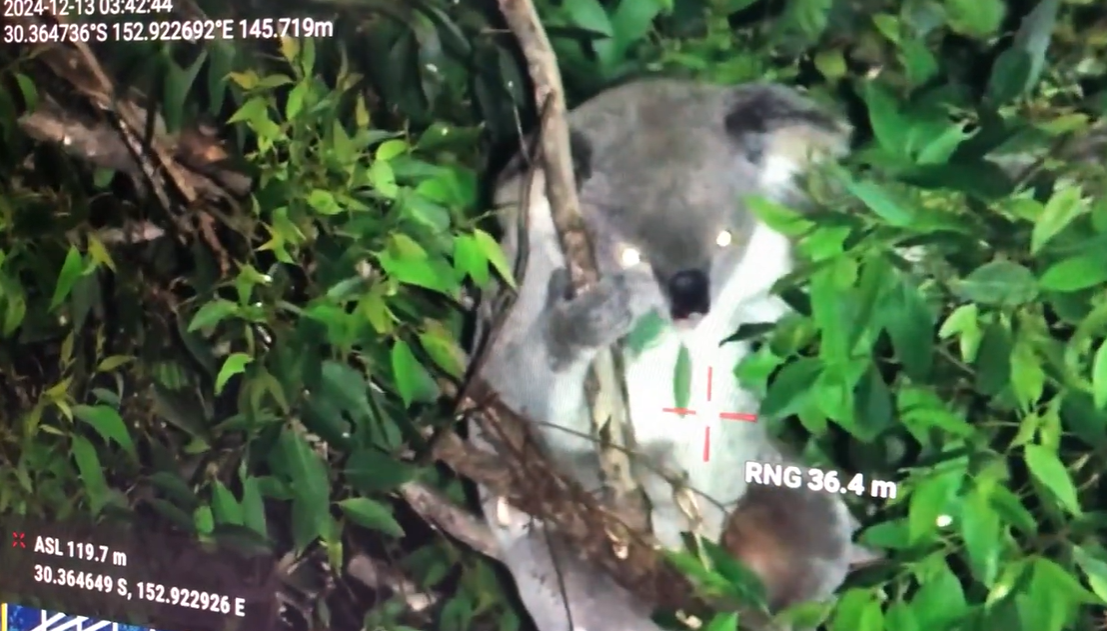Media release
From:
A new study has shown areas of state forest in Northern New South Wales, currently zoned as hardwood eucalypt plantation and slated for logging in 2025–2026, are in fact vital koala habitat.
Tuckers Nob State Forest, southwest of Coffs Harbour, was analysed in the collaborative research project between Griffith University, CQUniversity, conservation organisations and citizen scientists.
Published by MDPI in its journal WILD, the study combined drone technology, historical mapping, and ground surveys to track koala populations in the forest.
The team’s findings challenged current assumptions that timber plantations lacked conservation value.
"Instead, we’ve shown many plantation areas still contained original, high-quality eucalypt forest that supported our endangered koala populations,” co-author Dr Timothy Cadman said, from Griffith University.
Surveys were conducted in December 2024, covering 142 hectares and revealed clear signs of koala activity, including scat evidence and thermal drone imagery identifying 25 individual koalas.
This has prompted calls for the reclassification of the surveyed area from plantation to prime koala habitat.
"These aren’t just plantations; they’re home to one of Australia’s most iconic and endangered animals," Dr Rolf Schlagloth, from CQUniversity’s Koala Research-CQ and the Koala History & Sustainability Research Cluster, said.
“We’ve shown remnants of original forest exist within these zones and are actively used by koalas.”
Using historical aerial photography, mapping tools such as SIX Maps and Google Earth Pro, and modern drone-mounted thermal imaging, the team pinpointed critical areas of undisturbed habitat within the plantation.
These findings suggested excluding areas such as the Tuckers Nob study site from the proposed Great Koala National Park footprint for the sake of logging was both “short-sighted and inconsistent with current conservation strategies”.
Koalas were listed as endangered across most of their range in eastern Australia, and populations in New South Wales continued to decline due to habitat loss, fragmentation, and climate stress.
The authors of the study argued all high-value koala habitat – regardless of zoning – must be protected, and future conservation efforts must treat the integrity of the entire reserve system as paramount.
“The proposed Great Koala National Park is a key policy initiative aimed at reversing these trends, but ongoing logging within its proposed boundaries threatens to undermine its effectiveness before it is even established,” Dr Cadman said.
“The Tuckers Nob site sits outside the proposed Great Koala National Park boundaries, but we’ve shown when you look closer and reveal evidence that koalas are in fact residing there, the initiative needs to be re-examined and a holistic lens applied to it.”
The authors also called for World Heritage status to secure long-term protection for koalas and the ecosystems they depended on.
The study ‘Original Forest, Wildlife Sightings and Scats: Community and Scientists Working Together to Protect Koalas Living in Intensely Managed Parcels of Forest Within the Proposed Great Koala National Park in New South Wales, Australia’ has been published by MDPI in the journal WILD.



 Australia; NSW; VIC; QLD; TAS
Australia; NSW; VIC; QLD; TAS


